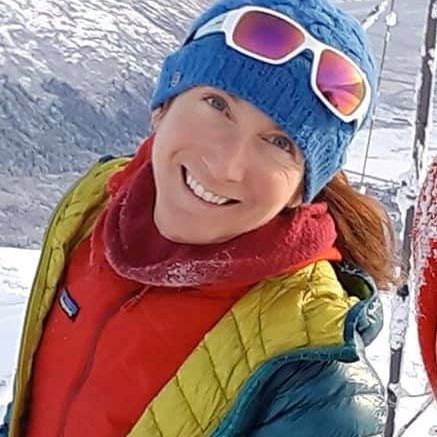Spring 2022
| Speaker: | Jennifer Aschoff, UAA Geological Sciences |
| Title: |
"Shoreline Evolution and Dynamic Subsidence: New Insight from A Synthesis of 50 years of Research in the Cordilleran Foreland Basin" Coauthored by Zhiyang Li |
| Date: | April 1, 2022 |
| Time: | 11:45 am |
| Location: | Contact instructor for details. jemezger@alaska.edu |

Abstract:
Dynamic topography refers to the vertical deflection of the Earth’s surface generated in response to flows within the mantle. Dynamic subsidence has been increasingly invoked to explain the subsidence and migration of depocenters in the Late Cretaceous Cordilleran foreland basin (CFB). The North American Cordilleran foreland basin (CFB) spans much of the North American continent and is one of the best-preserved and most intensively studied sedimentary basins in the world. Despite recent advances, it is difficult to discriminate the effects of dynamic topography from other subsidence mechanisms, and the spatial and temporal scales of dynamic topography is not well known. This study presents a continent-scale synthesis of more than 50 years of stratigraphic research, and new data from Upper Cretaceous strata in the central part of the CFB, where high-resolution chronostratigraphic constraints are present, to provide new insight into the role of dynamic subsidence in forming and filling of foreland basins. The complex basin evolution of the CFB is chronicled herein using 25 temporally constrained paleogeographic maps illustrating shoreline history (i.e., location and migration trend) and isopach maps through the Late Cretaceous.
Detailed stratigraphic synthesis and paleogeographic maps of the CFB indicate that stratigraphic stacking patterns and shoreline migration trends varied along the coeval shoreline during most of the Late Cretaceous, supporting the notion that sediment fill of the CFB was subject to complex interactions of tectonics (both local and regional scale and both crustal and subcrustal processes), and sediment supply, not just eustasy. The spatial variability in the shoreline migration trend, as well as changes in the sediment dispersal pattern help to disentangle the effects of subsidence caused by crustal and/or subcrustal processes and provide constraints on the spatial and temporal scales these processes operate on. Although crustal processes such as flexural subsidence caused by loading of the Sevier fold-thrust belt and local Laramide structures has long been considered to be the overriding subsidence mechanism for the development of the CFB, the effect of mantle-induced dynamic topography (uplift and subsidence) is evident in paleogeographic maps and isopachs shown here. Subcrustal processes such as mantle flow, possibly associated with subduction of an oceanic plateau attached to the Farallon plate (i.e., the conjugate Shatsky rise), were documented as an important subsidence/uplift mechanism in the CFB since at least ~ 85 Ma. The chronostratigraphic framework and paleogeographic maps compiled herein provide critical boundary conditions for forward modeling, such as geodynamic and landscape models, to better understand the paleogeographic and tectonic evolution of the CFB and other basins worldwide. Continent-scale stratigraphic syntheses such as this study are critical to developing better understanding of the role of the mantle in the formation and fill of sedimentary basins.


